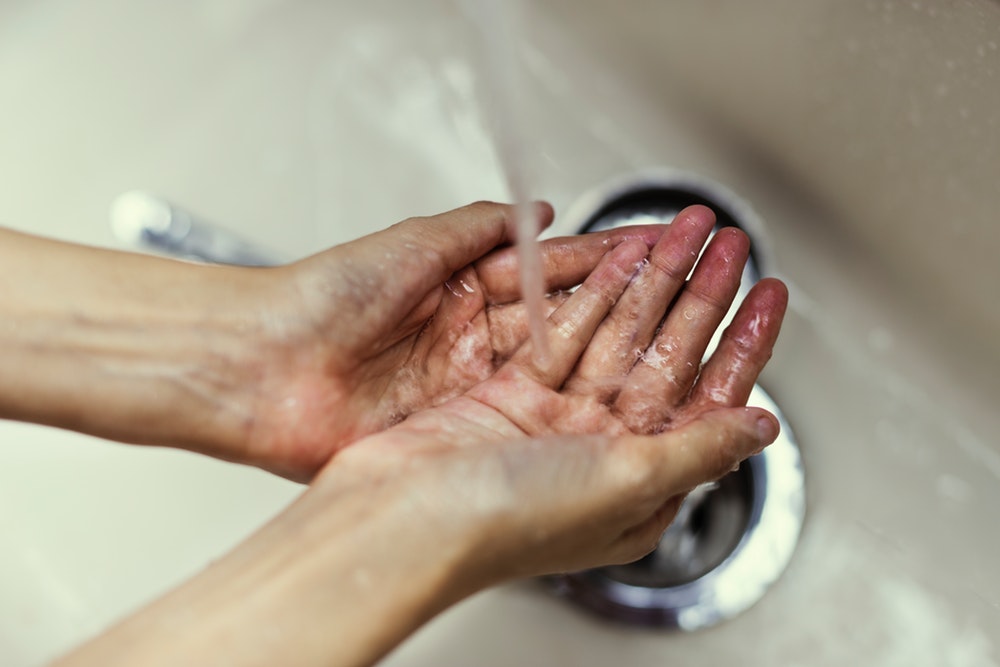How To Unclog A Kitchen Drain With Standing Water
Standing water in the kitchen sink is a sure sign of a clogged sink. The water is either completely blocked or is draining very slowly.
Luckily, a clogged kitchen drain doesn’t require calling a plumber. Several simple DIY fixes work great to get the water flowing again.
Before you start unclogging, remove all the standing water in the sink. You can scoop it into a bucket and pour it down a working drain.
Then remove any bits of food and soap that are on the drain.
How to unclog a kitchen drain with standing water

With the drain opening clear and easily accessible, you can get to work unblocking it. Here are a few things you can try.
1. Plunger
With some patience and a bit of muscle, a plunger will usually clear a clogged drain. It’s especially effective against large bits of food obstructing water flow. This can happen when you are washing dishes or if you leave some dirty dishes in the sink.
It takes a few pushes with a plunger to unclog the drain. Make sure the suction rubber at the bottom is covering the entire drain to keep air from escaping.
When the drain clears, you’ll hear trapped water draining. Open the faucet to make sure the water is draining normally.
To completely clear the drain, it’s a good idea to run hot water after using the plunger to get rid of oils and grease.
You can also use a drain unblocker or a homemade drain cleaner to remove grime and other stuff the plunger couldn’t get rid of.
2. Drain unblocker
Drain unblockers, also called drain cleaners, are strong chemicals formulated to clear the drain of hair, oils and other obstructions.
They come in form of a liquid, powder or gel. It can be a caustic cleaner containing chemicals like lye, an oxidising cleaner containing bleach or peroxides or a strong acid cleaner.
The cleaner reacts with the obstructions in the drain. It can dissolve some of the clogging substances or heat them to make it easier for them to flow.
Most drain unblockers are heavier than water, meaning they can sink below the trapped water to get to the disgusting stuff that’s blocking the drain.
Chemical drain unblockers are highly effective at unclogging the drain. But you need to exercise caution when using them.
Read the usage instructions before use and take all the recommended precautions
3. Home made drain cleaner
If you’d rather not use a strong chemical, you can make your own milder drain cleaner at home.
The easiest one involves baking soda, vinegar and hot water. Here’s what you need to do.
- Pour a half cup of baking soda down the drain.
- With a plunger in hand, follow it up with a half cup of vinegar. Immediately cover the drain with the plunger to prevent the bubbling and foaming reaction that follows from overflowing back up the drain.
- When the reaction subsides, leave the drain to sit for about half an hour.
- Finish by pouring hot water slowly down the drain.
- For particularly severe clogging, you may need to repeat this procedure to completely clear the drain.
For less severe clogs, such as those caused mostly by grease build-up, pouring hot water down the drain is enough to unclog it. You can try just the hot water first before you use the above combo. Add a bit of detergent to the water for more effective removal of oils and grease
4. Plumber’s snake
If you don’t want to use any chemicals, store-bought or homemade, a plumber’s snake also works great most of the time.
It’s not very effective against oils and grease but it’s perfect for clearing larger bits like hair, soap and food.
You can also use a coat hanger to remove gunk from the drain but it’s not as effective as a plumber’s snake and you need to shape it properly for it to work.
But if you are in a pinch, it’ll at least get your kitchen drain flowing again
5. Unclog the P-trap
In some cases, you need to remove the P-trap to unclog the sink. The P-trap is the U-shaped part under the sink.
It’s always filled with water to prevent sewer gasses from escaping up the drain. If it is blocked, water from the sink will not flow down the drain.
Place a bucket under the sink to catch water. Then remove the P-trap and clean it with a coat hunger or nylon brush.
Rinse it with some hot water before putting it back.
One piece of additional advice, don’t try to use your vacuum cleaner!




